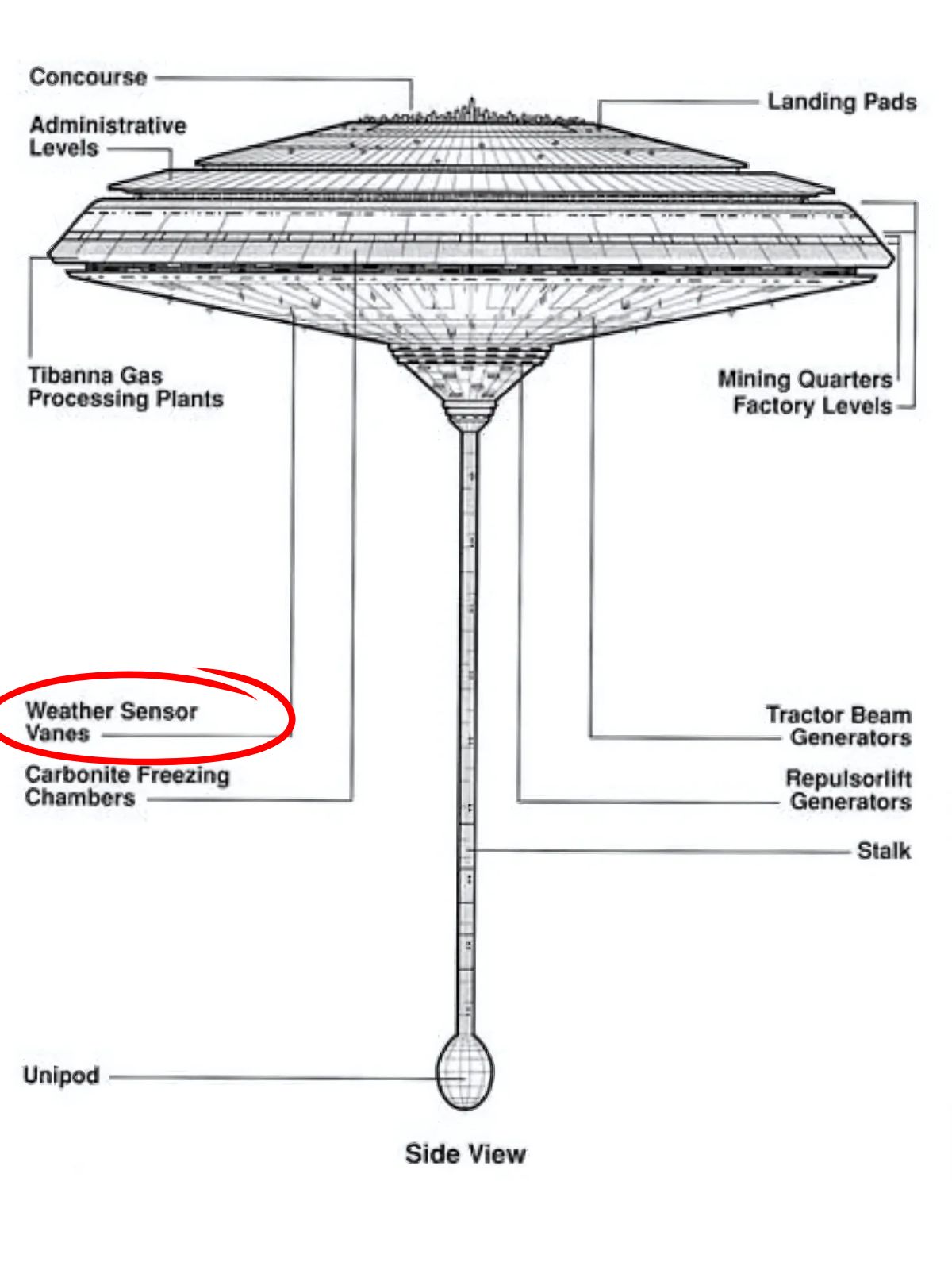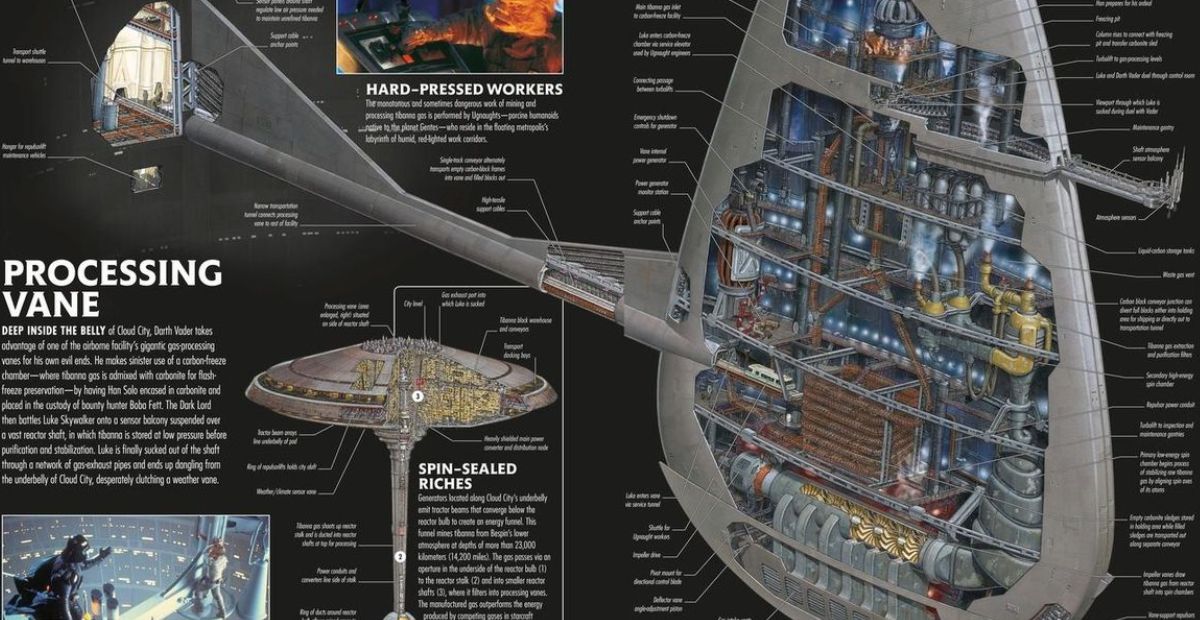I’m sure every Star Wars fan has watched the battle between Luke Skywalker and Darth Vader on Cloud City in The Empire Strikes Back countless times. And no matter how many times I see it, Vader’s line, “I am your father,” still hits me like it did the first time.
But that’s not what I’m here to talk about. After Luke’s defeat, we see him drop through an exhaust shaft and end up clinging to what looks like an antenna. If you’ve always thought it was just an antenna, you might want to think again.
It turns out that it’s not just an antenna, as we’ve always thought. Let me explain.
Luke Was Hanging on a Weather Vane
At first glance, the structure Luke was holding onto might seem like an antenna. However, after looking into it and referencing the script of The Empire Strikes Back, it turns out it’s something entirely different.
The script describes the scene as follows: “Unable to hang onto the pipe, Luke tumbles out, emerging at the undermost part of Cloud City. Reaching out desperately, he manages to grab onto an electronic weather vane.”

So, Luke wasn’t clinging to an antenna but rather an electronic weather vane.
According to StarWars.fandom, these weather vanes, also called weather scanners, serve to provide weather reports or adjust atmospheric conditions within Cloud City.

Weather Vanes Aren’t the Only Vanes on Cloud City
While weather vanes play an important role on Cloud City, they’re not the only vanes in operation. Deep within the city lies another critical structure: the gas-processing vanes.
These massive, triangular devices are essential for purifying, stabilizing, and preserving Tibanna gas, the resource that fuels Cloud City’s economy and powers hyperdrives and weaponry with unparalleled efficiency.
Deep within Cloud City, these vanes are suspended in enormous reactor shafts and connected through transportation tunnels.
The process begins with Tibanna gas being drawn into the city’s reactor bulb by tractor beams and then funneled through the reactor stalk. Once stored at low pressure, the gas-processing vanes get to work, using turbines to suction the gas and transfer it to purification systems.
The purified gas is then sent to a carbon-freezing chamber, where it’s mixed with carbonite for preservation.


